We were bird ringing at Botuin, Vanrhynsdorp, at the peak of the spring wildflower season. We didn’t do any dedicated trips to the special touristy flower spectacles. But we were surrounded by flowers during our daily bird ringing sessions.
Over the five days, we didn’t quite make 200 birds handled. The total here shows 192 birds, of 28 species.
| Species | Count |
| Common Quail | 1 |
| Speckled Pigeon | 3 |
| Ring-necked Dove | 1 |
| Laughing Dove | 12 |
| White-backed Mousebird | 5 |
| Karoo Lark | 1 |
| Brown-throated Martin | 1 |
| African Red-eyed Bulbul | 5 |
| Karoo Chat | 2 |
| Familiar Chat | 2 |
| Karoo Scrub Robin | 1 |
| Long-billed Crombec | 1 |
| Levaillant’s Cisticola | 1 |
| Namaqua Warbler | 3 |
| Fiscal Flycatcher | 1 |
| Southern Fiscal | 2 |
| Red-winged Starling | 1 |
| House Sparrow | 1 |
| Cape Sparrow | 40 |
| Cape Weaver | 35 |
| Southern Masked Weaver | 23 |
| Southern Red Bishop | 37 |
| Black-headed Canary | 1 |
| White-throated Canary | 1 |
| Yellow Canary | 1 |
| Cape Bunting | 2 |
| Karoo Thrush | 7 |
| Cape White-eye | 1 |
| Totals: 28 Species | 192 |
Saturday afternoon and Sunday, 23 and 24 August
We had a few hours to ring after we arrived. We set up mist nets at Botuin. Lots of daisies!
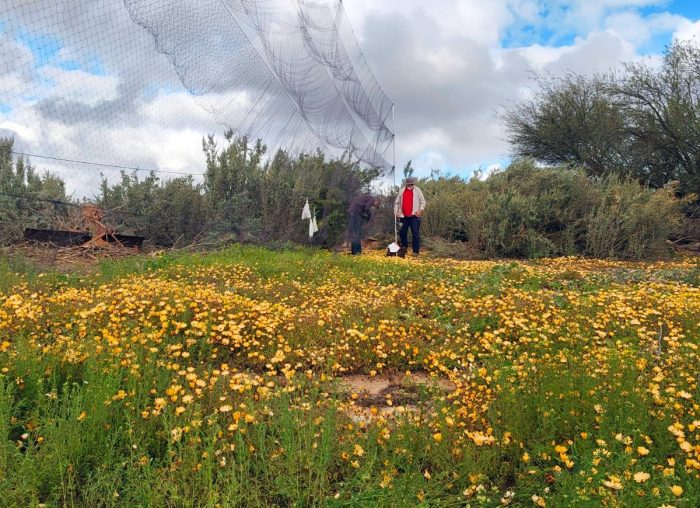

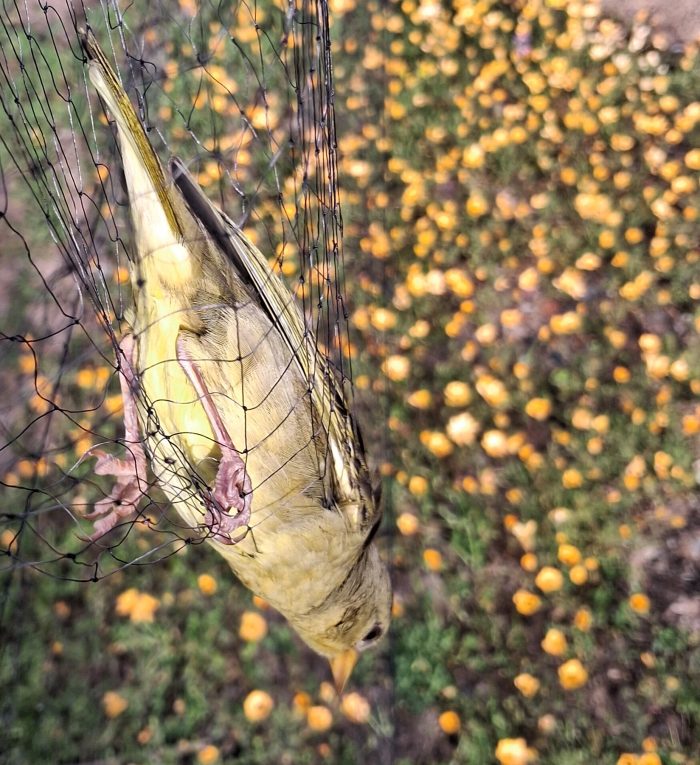
Cape Weaver, gently held above the daisies by the mist net,

The grey flanks and the yellow eye-ring point to this being a Karoo Thrush rather than Olive Thrush. By the time you get as far north from Cape Town as Vanrhynsdorp, the vast majority of thrushes are Karoo Thrushes.
During the late afternoon ringing session on Saturday and on Sunday morning, we caught 61 birds of 14 species in the Botuin gardens. Cape Sparrow was the most numerous, with 18 birds.
Monday, 25 August
This looks like an early start, but by ringing standards it was quite late. Sunrise was a little after seven o’clock, so we got almost two hours more sleep than we would get in midsummer.


We created a curved line of nine long mist nets, completely out in the open …
At the Lark Site, we are happy if our total number of birds handled reaches double figures. We exceeded the target by 10%, with 11 birds, of nine species. Is this worth the effort? The answer is an emphatic yes. Dieter Oschadleus has ringed 420 species. He added two ringing lifers during the morning: Common Quail and Black-headed Canary.
Here is a set of Common Quail photographs!
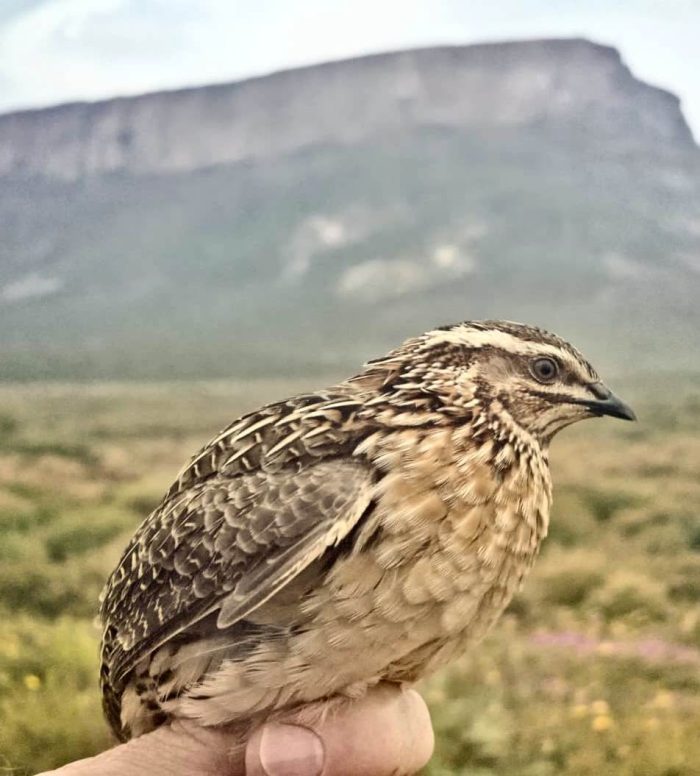
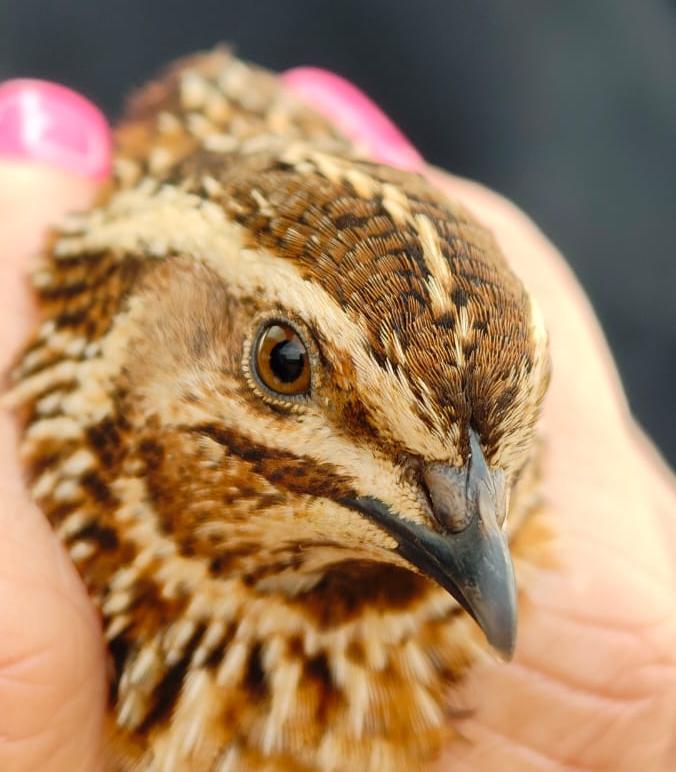
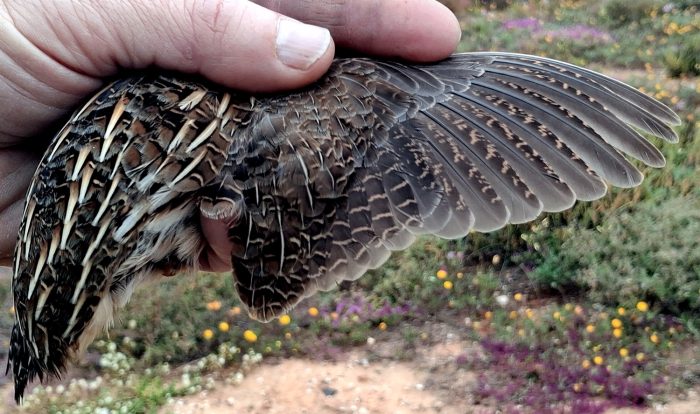
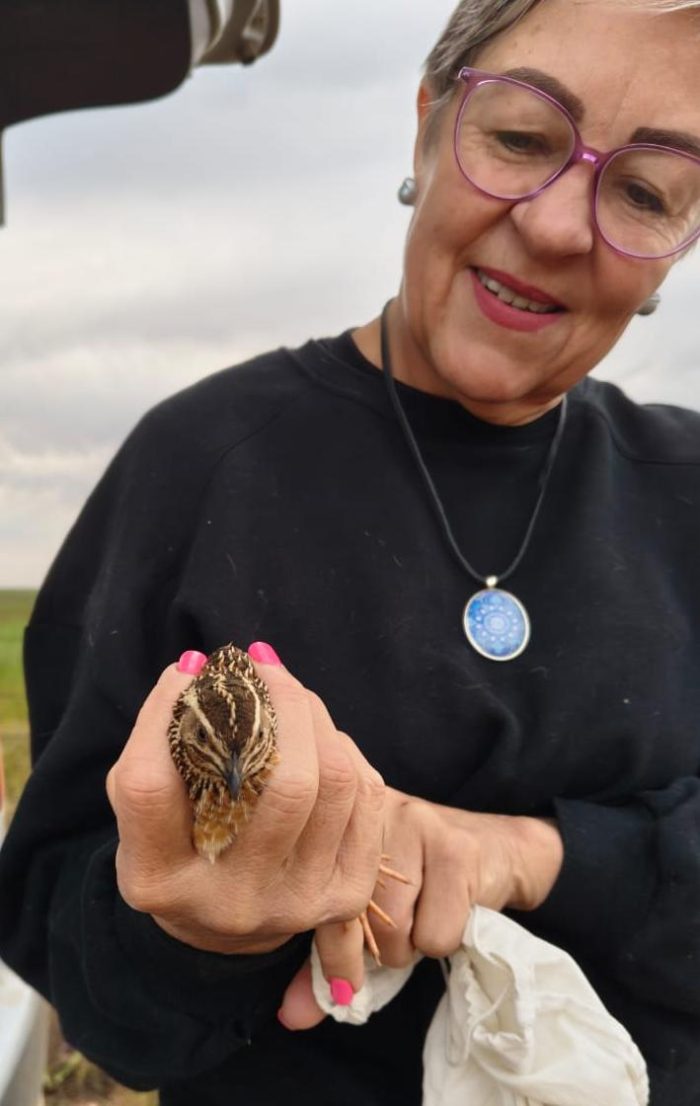
Salome Willemse, citizen scientist and bird ringer, and our host at Botuin, timed it perfectly to bring breakfast at exactly the moment we caught the Common Quail.
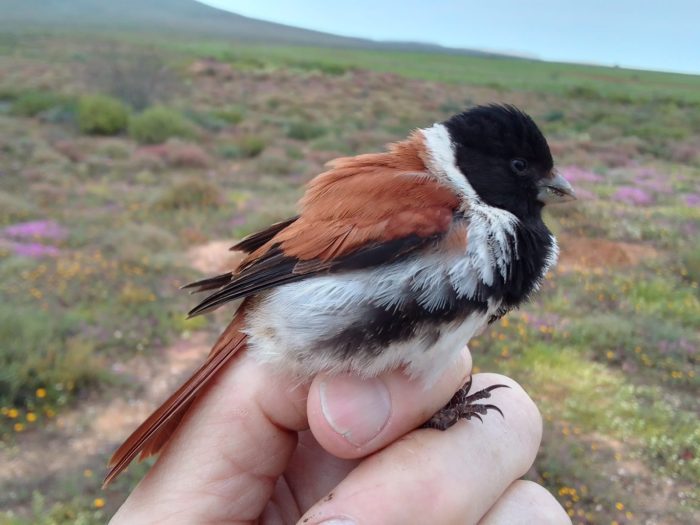
The Black-headed Canary didn’t get as many photographs as the Common Quail.

This Cape Bunting was a retrap. It had been ringed on 5 February 2024, 17 months ago.
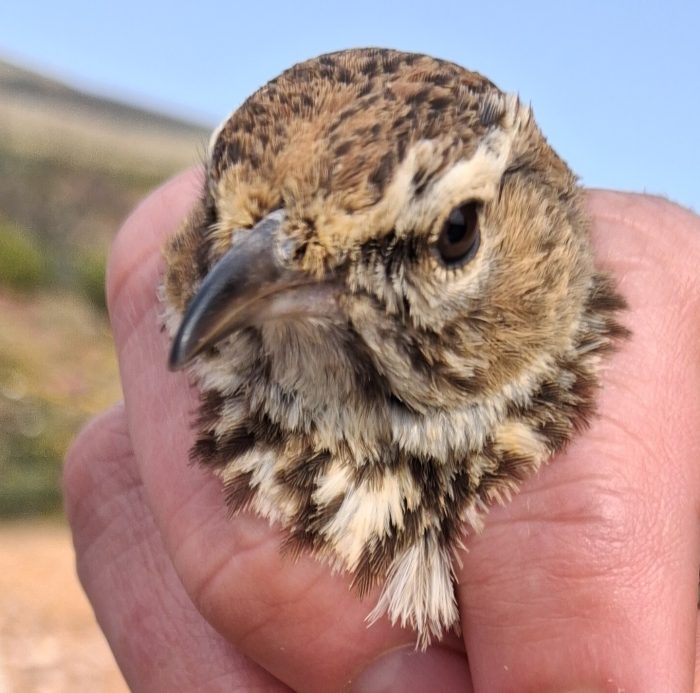
Even though we call this the Lark Site, it is mainly a place where we hope to catch larks, rather than catch them with regularity. Fortunately we got a lark. This is Karoo Lark. It is a poorly known species, with remarkably little published about any aspect of its biology, apart from taxonomy!
The flowers at the Lark Site were impressive.
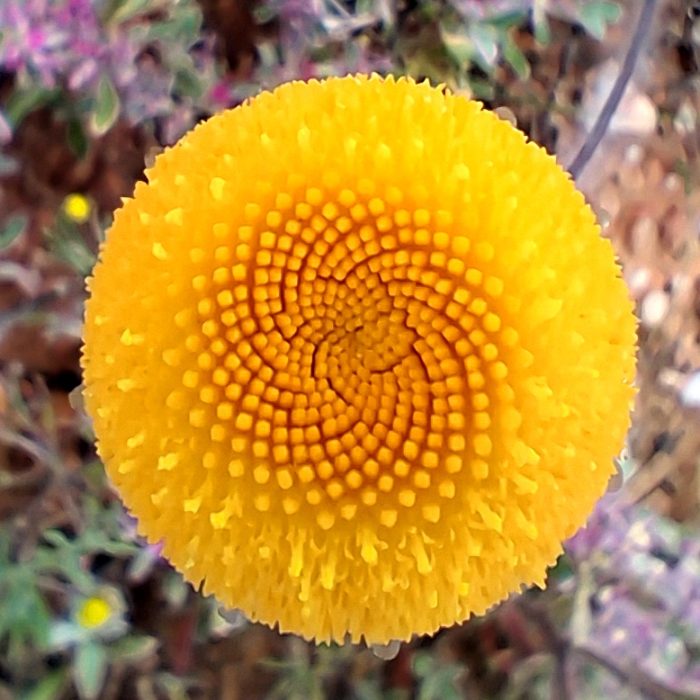
This is Gansogie [= goose eye] Cotula barbata. It’s an annual herb that flowers in August and September.
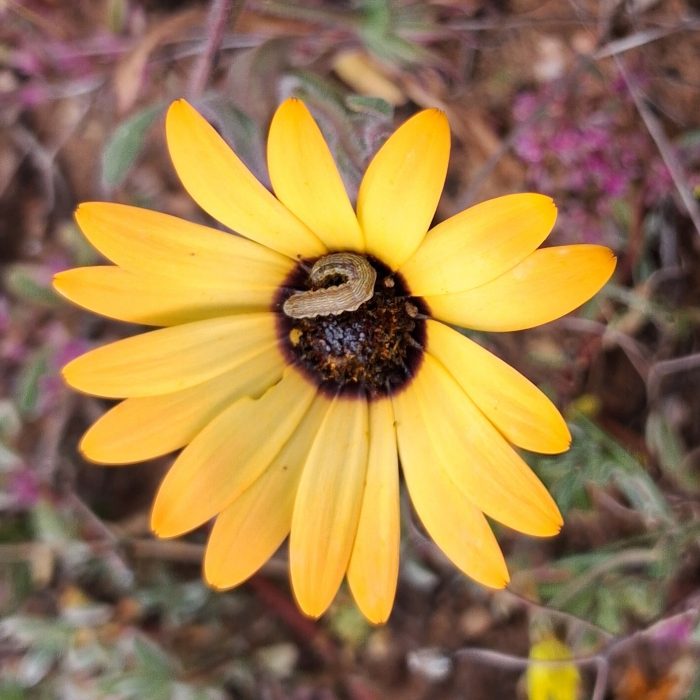
This is the classic Namaqua Daisy Dimorphotheca sinuata. The Afrikaans name is Jakkalsblom. The caterpillar has not yet had a nibble of the petals.
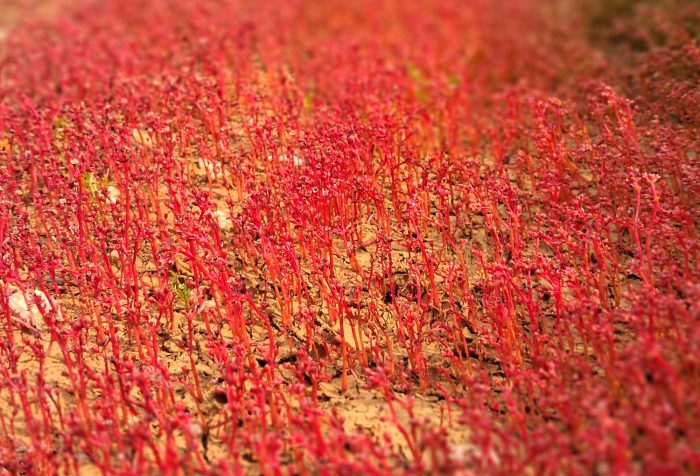
This plant is carnivorous. It is one of the many species of Sundew. The scientific name is Drosera trinervia. In Afrikaans, it is both Sonnedou, the direct translation of sundew, and Snotrosie [=’little snot rose’]
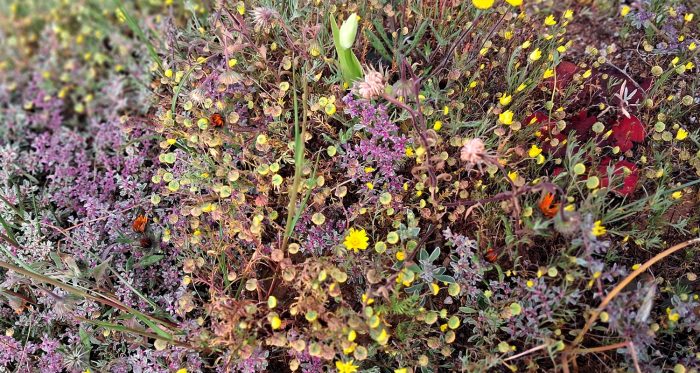
It is hard to know where to walk when the carpet underfoot looks like this!

Southern Meadow Whites Pontia helice were actively visiting flowers. This flower is Felicia australis, Sambreeltjie [= little umbrella].
Tuesday, 26 August
At the Vanryhynsdorp Sewage Works, the target is 100 birds in a day. That is a bit optimistic, but do-able.
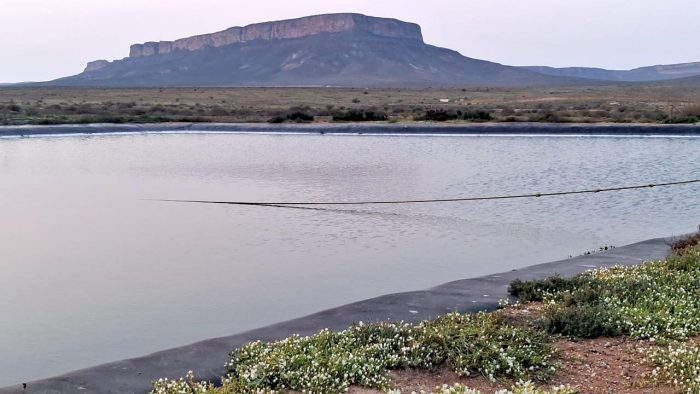
Each pond at the Vanrhynsdorp Sewage Works has a rope across it. If you fall in (and the plastic that lines the edges is notoriously slippery), you swim to the rope, and pull yourself out. There is a cold shower handy!
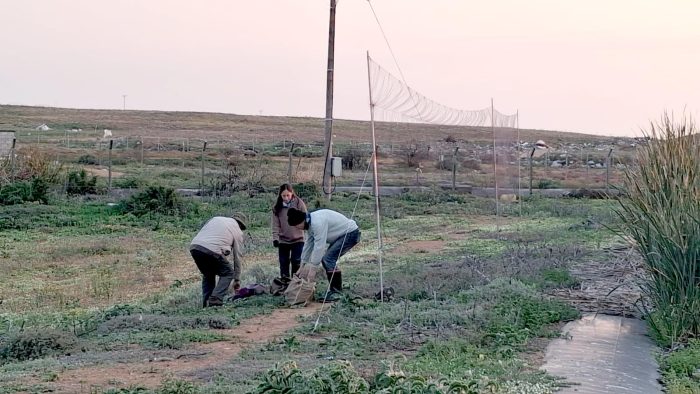

Mist nets up by dawn. The focus is on birds arriving and leaving the reed beds in this section of one of the ponds.

Most of the male Southern Red Bishops were in full, or almost full, breeding plumage.

Given that the incubation period is 15 days, and the fledging period is 18 days, the egg out of which this newly fledged Southern Fiscal hatched must have been laid early in July.
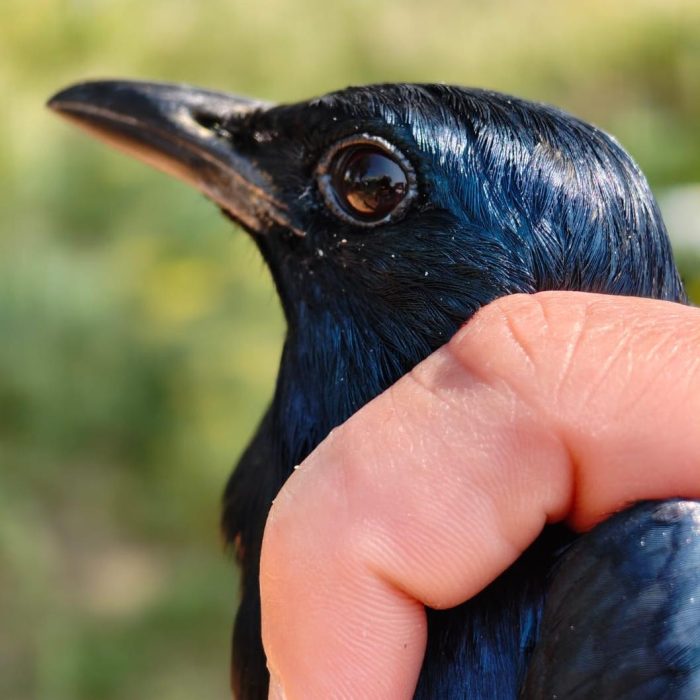
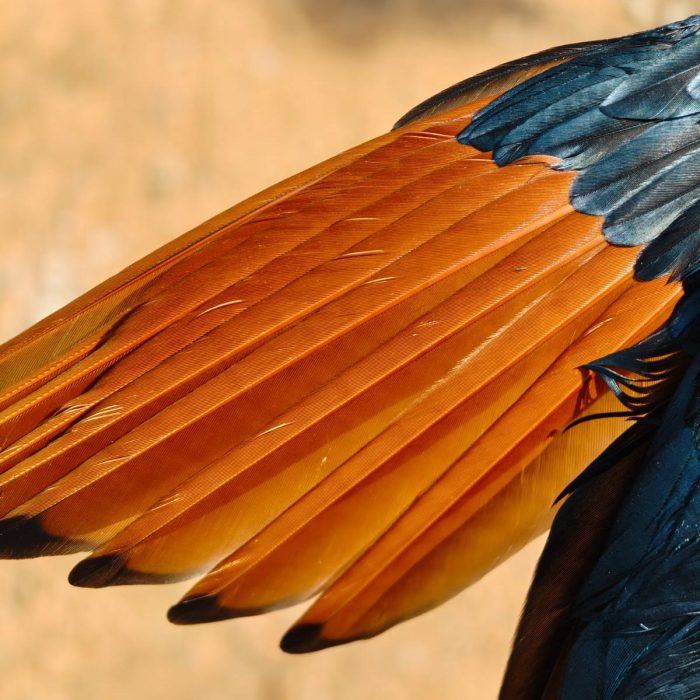
This was our only Red-winged Starling. It is a male because the head is black. What is unusual about Red-winged Starlings is that the juveniles look like males, whereas in most species juveniles look like females. Vanrhynsdorp is near the northern edge of the range on the western side of South Africa.
Our total for the morning at the sewage works was 87, so we scored a credible 87%. There were four retraps. All had been ringed in 2023, and three of the four had been ringed at Botuin, which is 1.7 km away (see map below).
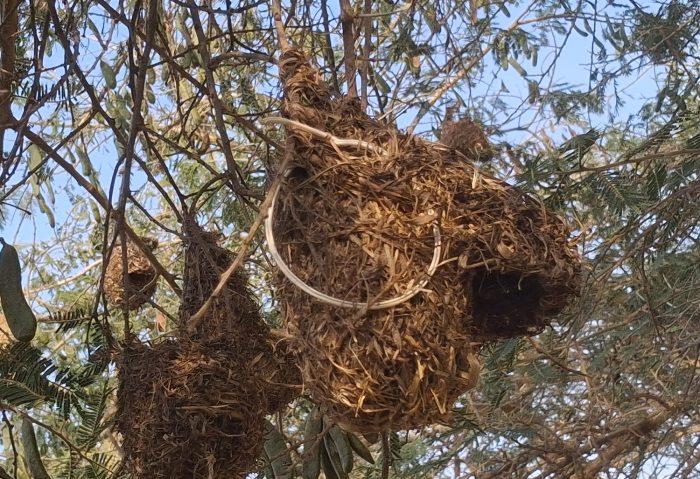
This is a Cape Weaver nest from a year ago. It was so well made that it has survived the buffeting of a year’s weather. There are new nest close by. This nest is directly above the spot at the sewage works where we usually set up our ringing station. Bird rings come as strings on thin plastic tubes. When the end of the tube gets annoyingly far from the next ring to be used, the plastic gets cut. This piece of plastic woven into the nest looks suspiciously like ringers’ litter. But closer inspection shows that, whatever its purpose was, this is not the designs used for strings of rings.
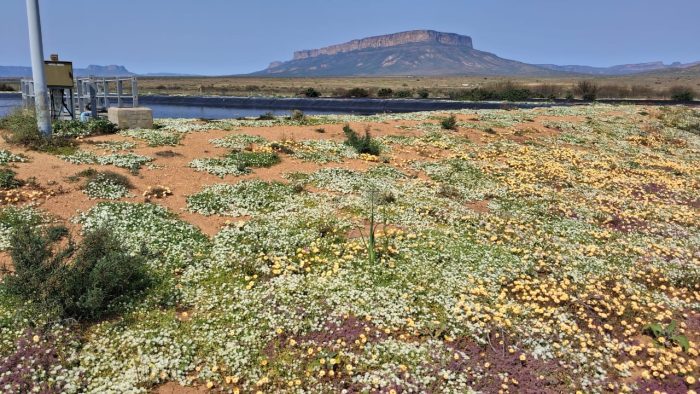
Even at the sewage works the flowers were excellent!
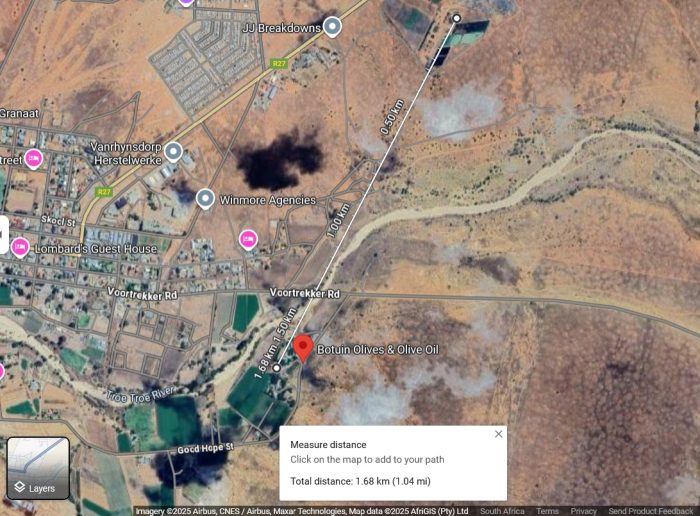
The drive from Botuin to the Vanrhynsdorp Sewage Works starts by traveling back into the town, and then out on the R27. But the Google map shows that the direct distance is 1.68 km.
We celebrated a successful expedition with homemade pizzas!
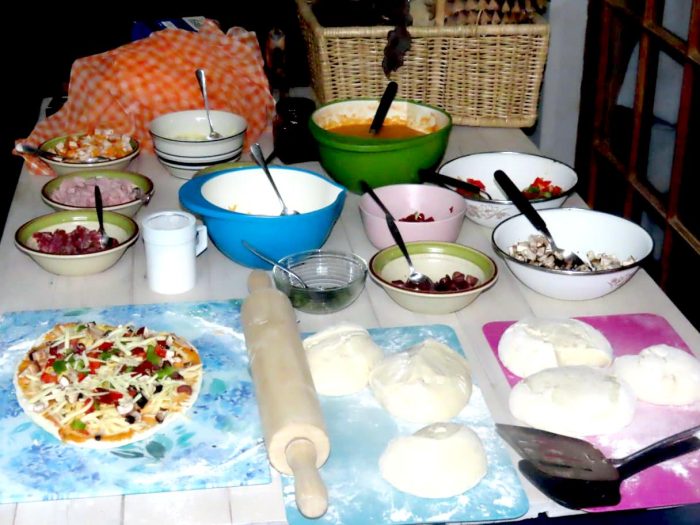
Assemble your own pizza!

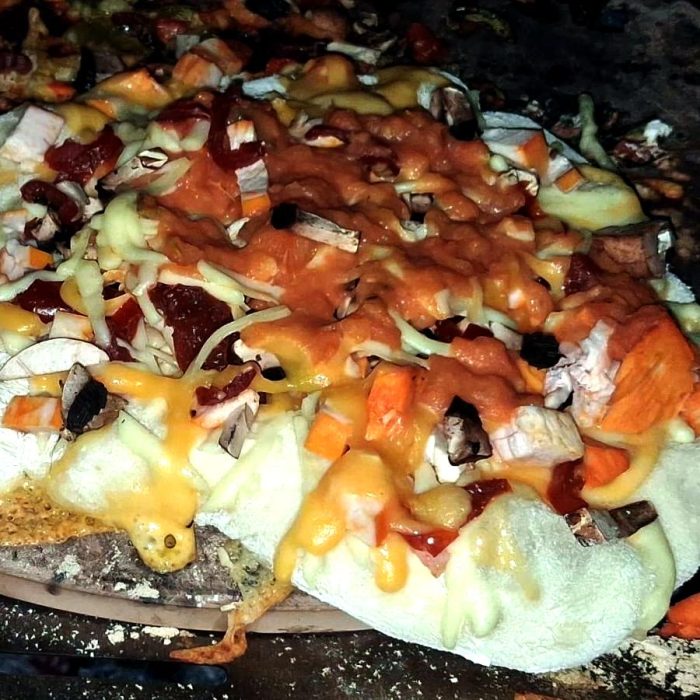


We only made one decadent chocolate and marshmallow pizza, and that was for dessert!
Thanks …
Botuin Cottages provided a superb base for the trip. We deeply appreciated Salome Willemse’s outstanding hospitality, from breakfasts brought to us in the field to delicious dinners .Skipper Boks and the staff at the Vanryhnsdorp Sewage Works were extremely helpful.

A list of trips with reports like this one can be found here. If you would like to join us, here is the list of upcoming events. There is an article about the value of bird ringing to conservation and research here.

